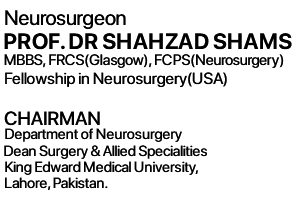Introduction
Head injuries encompass a spectrum of trauma to the head, often resulting from accidents, falls, or sports-related incidents. They can be categorized as closed head injuries, like concussions, contusions, and diffuse axonal injuries, or open head injuries, including penetrating injuries and skull fractures. These injuries pose risks to the delicate brain and can lead to an array of physical, cognitive, and emotional consequences.
Seeking immediate medical attention is crucial as even seemingly minor head injuries can have serious effects. Diagnostic tools such as CT scans and MRI scans aid in assessment, and treatment ranges from rest and observation for mild injuries to surgical intervention for more severe cases. Preventive measures, such as wearing helmets and seat belts, play a significant role in mitigating the occurrence and impact of head injuries.
Major Head Injuries
The major types of head injuries include:
Concussion
A common and mild traumatic brain injury (TBI), caused by a sudden impact or blow to the head. It can result in temporary loss of consciousness, confusion, memory problems, headaches, and sensitivity to light and noise.
Contusion
A more severe closed head injury involving bruising of brain tissue. It can lead to cognitive impairment, neurological deficits, and motor dysfunction.
Diffuse Axonal Injury (DAI)
This occurs due to rotational forces that tear nerve fibers within the brain. It can result in widespread brain damage, leading to various neurological impairments.
Skull Fractures
Fractures in the skull can vary from minor hairline fractures to more severe fractures that might damage brain tissue or blood vessels.
Penetrating Injury
This happens when an object penetrates the skull and enters the brain tissue, often causing localized damage and increasing the risk of infection.
Epidural Hematoma
A buildup of blood between the skull and the outermost layer of the brain, often resulting from a skull fracture and causing increased pressure on the brain.
Subdural Hematoma
Blood accumulates between the brain’s covering and the brain itself, usually due to a torn blood vessel. It can lead to neurological symptoms as pressure on the brain increases.
Intracerebral Hemorrhage
Bleeding within the brain tissue itself, often caused by traumatic injury or high blood pressure, can lead to significant damage and pressure on surrounding brain structures.
Second Impact Syndrome
A rare but potentially fatal condition that occurs when a person sustains a second concussion before fully recovering from the first. It can lead to rapid brain swelling and catastrophic outcomes.
Coup-Contrecoup Injury
This occurs when the brain is injured on both sides, at the point of impact (coup) and opposite the impact site (contrecoup), often due to the brain’s movement within the skull after an impact.
Hematoma
A localized collection of blood, either within brain tissue (intracerebral hematoma) or between the brain and its coverings (subdural or epidural hematoma), can result from head trauma and cause pressure on the brain.
Minor Head Injuries
Minor head injuries are generally less severe compared to major head injuries and typically involve less immediate danger to life. However, even minor head injuries should not be ignored, as they can still lead to symptoms and complications that require medical attention.
Some examples of minor head injuries include:
Minor Concussion
A mild form of traumatic brain injury that often results in temporary disorientation, headache, and brief loss of consciousness. Symptoms usually resolve within a short period with proper rest.
Minor Scalp Lacerations
Superficial cuts on the scalp that might bleed, but generally do not involve damage to the underlying skull or brain.
Bumps and Bruises
Small bumps, bruises, or swelling on the head, often caused by minor falls or accidents. These usually don’t result in lasting damage and can be managed with ice and pain relief.
Mild Cuts or Abrasions
Minor cuts or scrapes on the head that might require cleaning and simple wound care.
Minor Headache
Occasional headaches caused by minor head trauma or muscle tension. They can usually be managed with over-the-counter pain relievers and rest.
Post-Concussion Syndrome
Post-Concussion Syndrome (PCS) emerges as a collection of symptoms following a concussion or mild traumatic brain injury, persisting beyond the anticipated recovery period. These symptoms encompass persistent headaches, dizziness, fatigue, cognitive difficulties, sleep disturbances, light and noise sensitivity, and mood changes.
The underlying cause remains complex, attributed to factors like initial impact, brain chemistry alterations, and cellular damage. Management involves rest, gradual activity resumption, symptom-focused interventions, cognitive rehabilitation, physical therapy, psychological support, and education.
Collaborating with medical professionals is essential for a personalized treatment plan, considering the gradual and individualized nature of PCS recovery.
Causes of Head Injuries
Head injuries can stem from a range of causes, primarily involving sudden impact or force to the head. Falls, particularly among the elderly and children, contribute significantly, as do motor vehicle accidents, sports-related incidents, assaults, and workplace mishaps.
Engaging in high-impact or recreational activities, not adhering to safety measures, and encountering accidental collisions with objects or surfaces can also lead to head injuries. Vulnerable populations like children and the elderly are at heightened risk, and even natural disasters can induce head injuries through flying debris and structural damage.
Employing preventive measures such as helmets, seat belts, safety gear, and promoting awareness of potential hazards can play a pivotal role in minimizing the prevalence and severity of head injuries.
Treatments for Head Injuries
Treatment for head injuries depends on their severity. Immediate medical evaluation is vital for proper diagnosis and management. Mild cases might only require rest and symptom management, while moderate to severe injuries could involve imaging scans, stabilization, and possibly brain surgery to address bleeding, fractures, or pressure on the brain.
Medications for pain and nausea could be prescribed, and rehabilitation like physical, cognitive, or emotional therapy might be necessary for recovery. Psychological support, counseling, and follow-up care play key roles in addressing the emotional and mental aspects of recovery.
Preventive measures and education about the risks and potential consequences of head injuries are crucial in minimizing their occurrence and impact.






